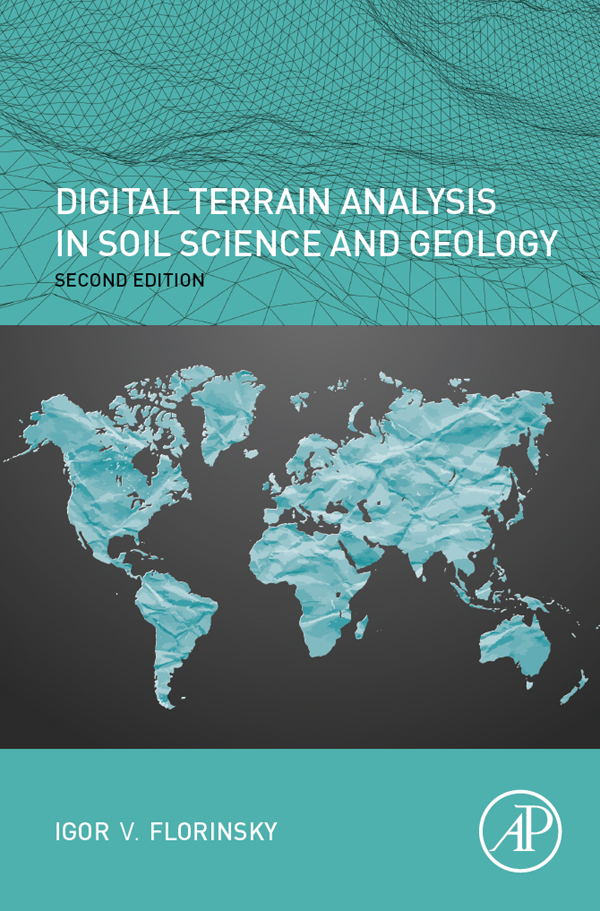|
Software en ru |
The software LandLord 4.0
is intended for digital terrain modelling and geomorphometric studies. Initial
data are digital elevation models (DEMs) based on plane
square grids and spheroidal equal angular grids. The
software LandLord 4.0 allows one to carry out the following procedures: ·
Derivation of digital models of local
topographic variables. Four
methods can be used to process DEMs based
on a plane square grid: the Evans–Young method, the Zevenbergen–Thorne
method, the Shary method, and the IF-2009 method. The IF-1998
method can be used to derive partial derivatives from DEMs based on a spheroidal equal angular grid. One can calculate
the following characteristics describing the geometry of the topographic
surface in the vicinity of a given point on the surface: §
All variables of the complete system of curvatures: horizontal (or tangential) curvature, vertical (or profile) curvature, mean curvature, Gaussian curvature, accumulation curvature, ring curvature, unsphericity curvature, difference curvature, minimal curvature, maximal curvature, horizontal excess curvature, and vertical excess curvature. § Other local morphometric
variables, such as slope gradient, slope aspect,
northwardness, eastwardness, rotor,
Laplasian, plan curvature, shape index, curvedness, horizontal curvature deflection,
vertical curvature deflection, and others. § Models of landscape classification using four schemes: the Gauss, the Efremov–Krho, the Shary, as
well as accumulation zone ones. ·
Derivation of digital models of nonlocal
morphometric variables. The Martz–De Jong method is used to process
DEMs based on a plane square grid. This method adapted to the
geometry of the convex spheroidal equal angular grid is used to process DEMs based on a spheroidal equal angular grid. One can calculate
the following characteristics describing a relative position of a given point
on the topographic surface: § Minimal
and maximal catchment area. § Minimal
and maximal dispersive area. ·
Derivation of digital models of solar morphometric
variables. These variables can be derived from DEMs using
methods for the calculation of local variables (see above). One
can calculate the following characteristics describing relations between the
topographic surface and solar irradiation in the vicinity of a given point of
the topographic surface: §
Reflectance (Lambertian and
other models). § Insolation. ·
Derivation of digital models of combined morphometric
variables. These variables are derived from DEMs by the sequential
application of methods for nonlocal and local variables (see above),
followed by an arithmetic combination of the results. One can calculate the following
characteristics considering both the local geometry of the topographic
surface and a relative position of a point on the surface: §
Minimal and maximal topographic index. § Minimal
and maximal stream power index. ·
Smoothing of digital models based on square-spaced and spheroidal trapezoidal grids: § Weighted
average smoothing using 3 x 3, 5 x
5, and 7 x 7 kernels. § Calculating
depression-free DEMs by the Martz–De Jong method. ·
Some of the simplest mathematical operations with morphometric
models: addition, subtraction, multiplication, division, logarithming,
exponentiation, as well as area and volume estimation. ·
Statistical analysis: § Derivation
of linear regression-based digital
models of natural properties using
topographic attributes as independent variables in corresponding regression
equations. § Estimation
of root mean square errors (RMSE)
for all variables of the complete system of curvatures as well as slope gradient, slope aspect,
plan curvature, rotor, and derivating function derived from DEMs given by
square-spaced and spheroidal trapezoidal grids. ·
Visualization of DTMs using several colour and
grey scales (examples can be found in publications). ·
Import of Surfer binary files *.grd ·
Import of quasi-global and global DEMs: ETOPO1, ETOPO2, ETOPO5, GLOBO, GTOPO30, SRTM30, SRTM30_PLUS, SRTM15_PLUS, GEBCO, IBCAO,
IBCSO, SRTM3, SRTM1, ASTER GDEM, and AW3D30, as well as planetary DEMs from NASA
PDS archives. ·
Export of LandLord DTM files into plain text
files, ArcInfo text files *.asc, and Surfer binary files *.grd.
Availability and distribution I do not distribute the software. A collaborative
research with a subsequent joint publication is the only possibility to use
LandLord 4.0. For
details and examples, see:
|
